Gpr75-deficient mice are protected from high-fat diet-induced obesity
- PMID: 36854900
- PMCID: PMC10033368
- DOI: 10.1002/oby.23692
Gpr75-deficient mice are protected from high-fat diet-induced obesity
Abstract
Objective: G-protein coupled receptor 75 (GPR75) has been identified as the high-affinity receptor of 20-hydroxyeicosatetraenoic acid (20-HETE), a vasoactive and proinflammatory lipid, and mice overproducing 20-HETE have been shown to develop insulin resistance when fed a high-fat diet (HFD), which was prevented by a 20-HETE receptor blocker. Simultaneously, a large-scale exome sequencing of 640,000 subjects identified an association between loss-of-function GPR75 variants and protection against obesity.
Methods: Wild-type (WT) and Gpr75-deficient mice were placed on HFD for 14 weeks, and their obesity phenotype was examined.
Results: Male and female Gpr75 null (knockout [KO]) and heterozygous mice gained less weight than WT mice when placed on HFD. KO mice maintained the same level of energy expenditure during HFD feeding, whereas WT mice showed a significant reduction in energy expenditure. Diet-driven adiposity and adipocyte hypertrophy were greatly lessened in Gpr75-deficient mice. HFD-fed KO mice did not develop insulin resistance. Adipose tissue from Gpr75-deficient mice had increased expression of thermogenic genes and decreased levels of inflammatory markers. Moreover, insulin signaling, which was impaired in HFD-fed WT mice, was unchanged in KO mice.
Conclusions: These findings suggest that GPR75 is an important player in the control of metabolism and glucose homeostasis and a likely novel therapeutic target to combat obesity-driven metabolic disorders.
© 2023 The Obesity Society.
Conflict of interest statement
Figures

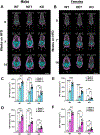

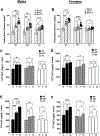

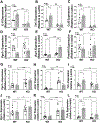
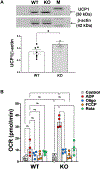
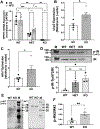
References
-
- Liu B, Hassan Z, Amisten S, King AJ, Bowe JE, Huang GC, et al. The novel chemokine receptor, G-protein-coupled receptor 75, is expressed by islets and is coupled to stimulation of insulin secretion and improved glucose homeostasis. Diabetologia 2013;56: 2467–2476. - PubMed
-
- Southern C, Cook JM, Neetoo-Isseljee Z, Taylor DL, Kettleborough CA, Merritt A, et al. Screening beta-arrestin recruitment for the identification of natural ligands for orphan G-protein-coupled receptors. J Biomol Screen 2013;18: 599–609. - PubMed
Publication types
MeSH terms
Grants and funding
LinkOut - more resources
Full Text Sources
Other Literature Sources
Molecular Biology Databases
Research Materials

